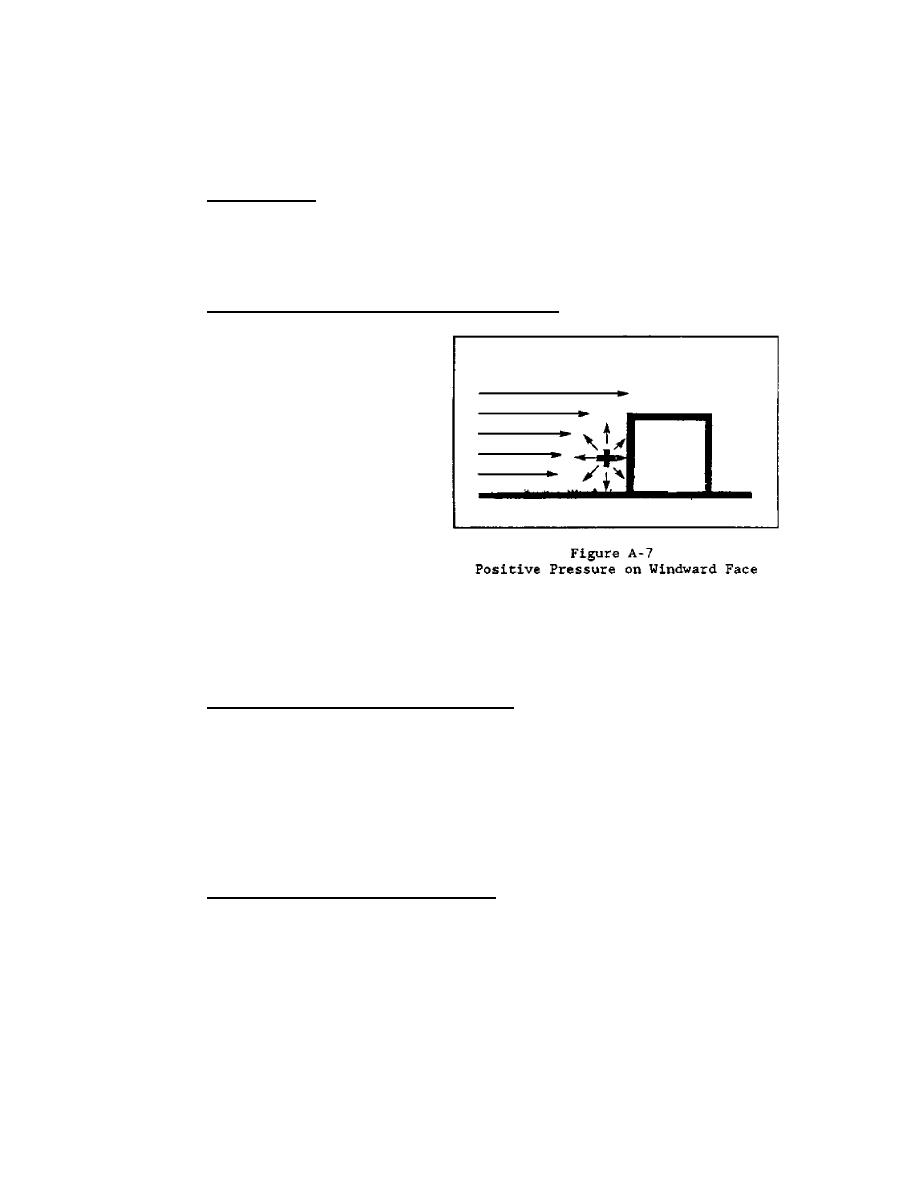
MIL-HDBK-1011/2
APPENDIX A (continued)
Section
3:
PREDICTING AIRFLOW AROUND NEARBY BUILDINGS AND OBSTRUCTIONS
3.1
Introduction. The flow of air around buildings is complex and
highly dependent on wind direction and building geometry. Architectural
features such as eaves, canopies, parapets, wingwalls, and neighboring
buildings and landscaping may change the flow pattern around a building
significantly.
[retrieve figure]
3.2
Airflow Around a Single Simple Building.
When moving air
encounters an obstruction such as a
building, a portion of the air
movement is stopped or slowed (see
Figure A-7). The deceleration
converts the kinetic energy of the
flow to potential energy in the form
of positive pressure. If the
obstruction is very streamlined
(such as the wing of an airplane)
the region over which this positive
pressure exists is very small. On
the other hand, if the obstruction
is large and unstreamlined, such as
the face of a building the region of
positive pressure is roughly as
large as the face of the building.
As the air is squeezed
around, above, or (if possible) below the
building, the velocity accelerates and the potential energy of the positive
pressure build-up is converted back into kinetic energy. When the velocity
exceeds that of the approach flow, the potential energy will be lower than
that of the ambient flow resulting in negative pressures or suctions.
3.2.1
Airflow Toward and Beyond the Wake. As the wind approaches a sharp
corner of the building, it tries to follow the geometry around the corner, but
cannot due to the momentum of the flow. The wind separates from the building
defining an upstream limit of the wake (see Figure A-8). Within the wake, the
pressure is negative and there is relatively little air movement. At the
boundary between the wake and the free stream there is substantial turbulence.
Momentum transfer across the wake boundary tends to blur the position of the
boundary. The free-stream airflow curves in toward the wake from all sides
until it rejoins the ground or the opposite streamline downstream of the
obstacle. The point at which the free-stream airflows rejoin defines the end
of the wake cavity (see Figure A-8).
3.2.3
Airflow Pressure Zones and Wakes. In order for the free-stream
airflows to be drawn back together to rejoin downstream of the obstacle, the
pressures must be negative within the entire wake. The greater the suction,
the faster the free-stream airflows are drawn together. Diagrammatically, the
highest suctions occur where the radius of curvature of the wake boundary is
smallest. At the end of the wake, where the wake suction approaches zero
(where the wake pressure approaches the ambient pressure) the radius of
curvature of the wake cavity approaches infinity. Since flows within the wake
are small, structures placed and fully engulfed in the wake will not
significantly alter the shape of the wake (see Figure A-9).
71



 Previous Page
Previous Page
